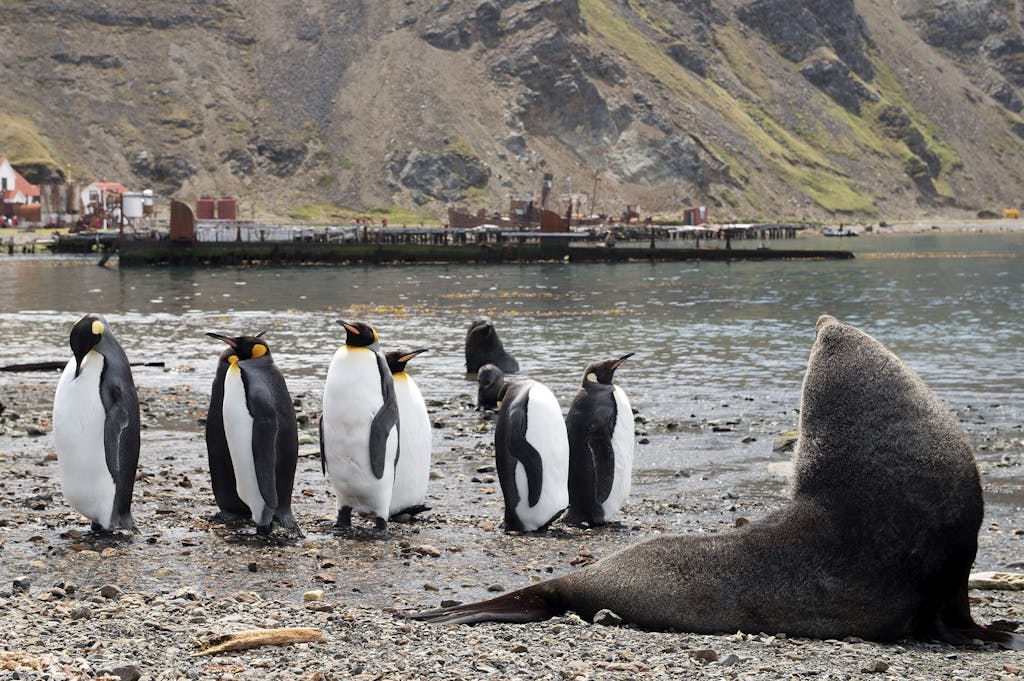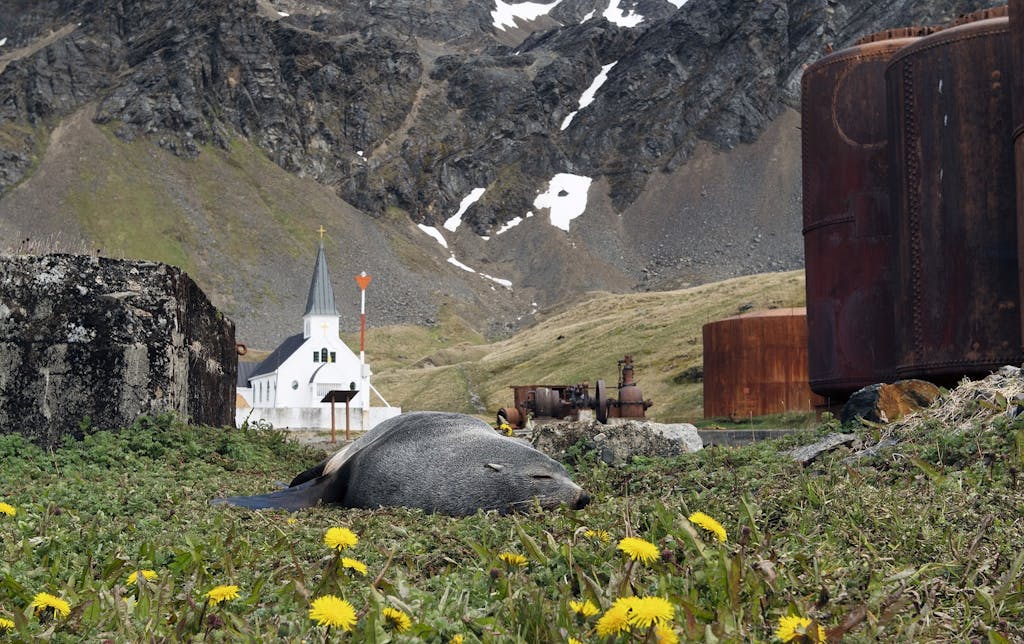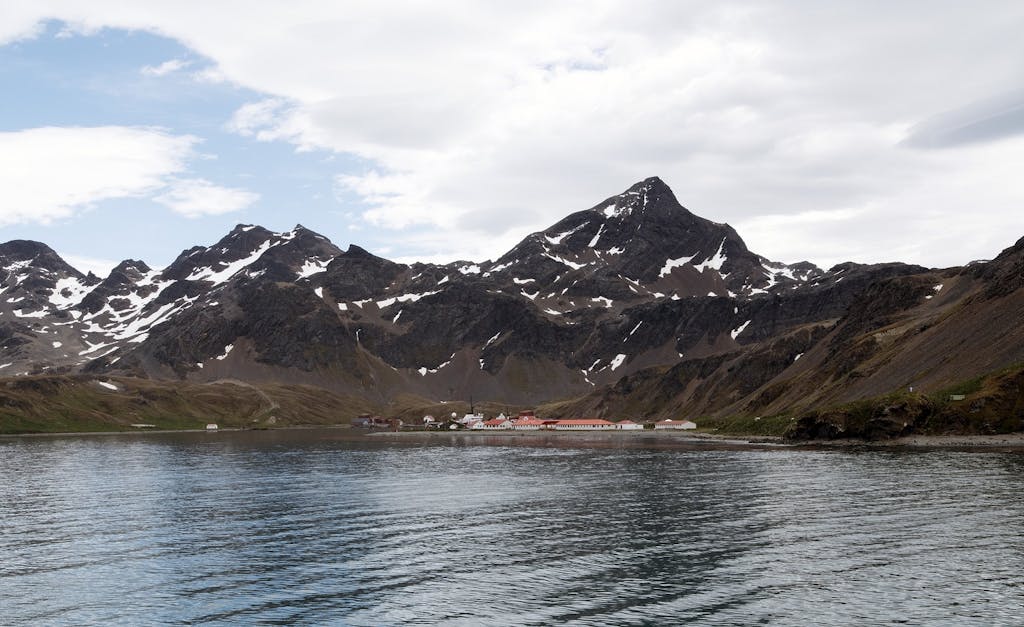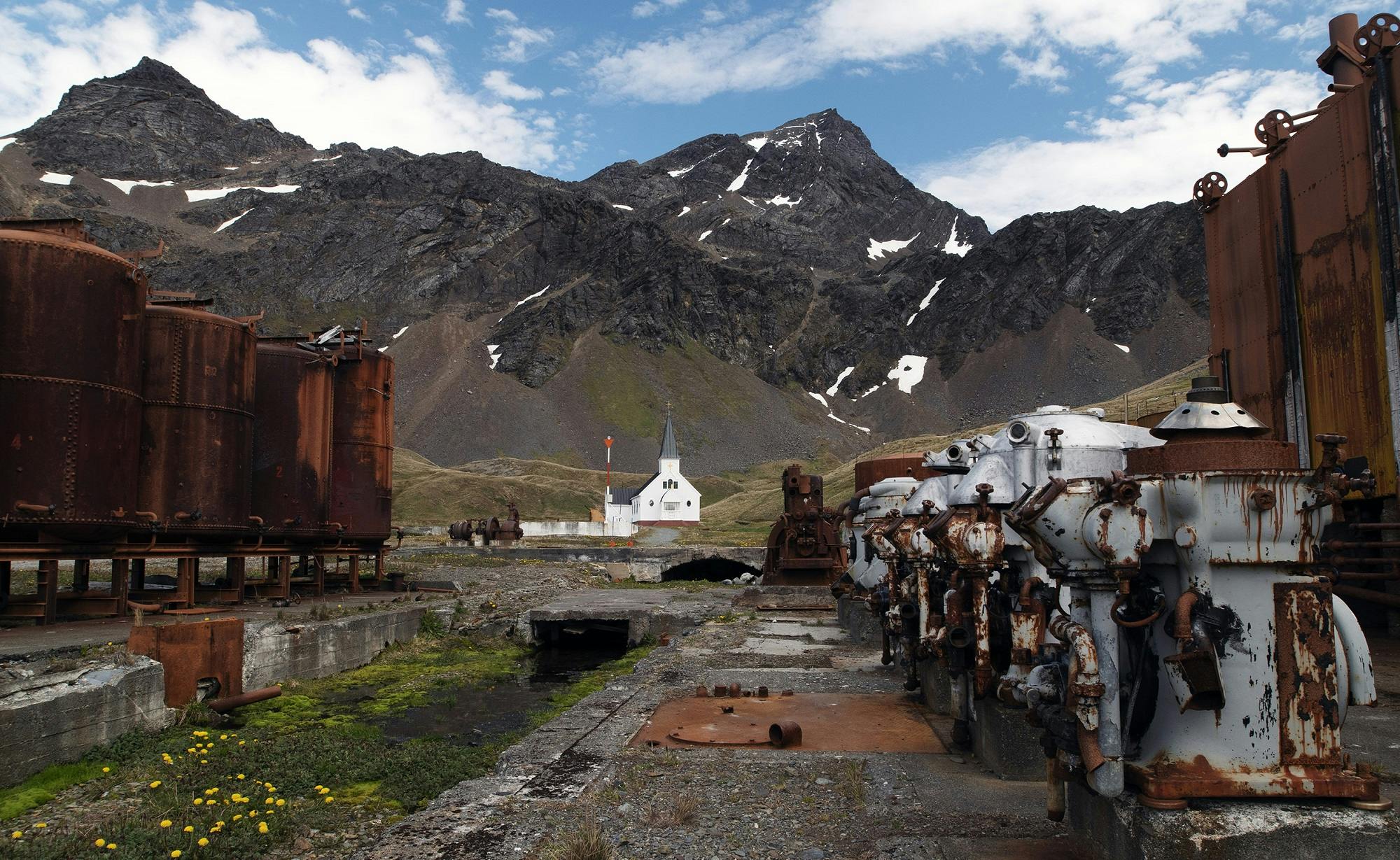Behind the Lens: An Emotional Moment in Antarctica’s Grytviken
Grytviken, on South Georgia Island, has today been reclaimed by abundant wildlife, yet the remote destination harbors a dark history within its spectacular landscapes. Expedition filmmaker Ross Vernon McDonald had long wanted to document the settlement’s conflicted past before arriving in Grytviken. He departed South Georgia not only with a repository of evocative, impossibly beautiful footage, but also with a renewed appreciation for the resilience of nature and a sense of encouragement for the future of our planet.
Walking Among Relics of History: “I’d always wanted to visit Grytviken, but never dreamed I’d have the opportunity to do so,” begins McDonald, a passionate nature lover, reminiscing about his first-ever trip to the former whaling station—the largest of its kind on South Georgia. “For its unique and dark history, its thriving wildlife populations, and its remote location, I’d become fascinated with Grytviken. When I first stepped ashore from one of Silversea’s Zodiacs while on a cruise to South Georgia, I was hit by an unexpected wave of emotion.”
“As you walk through the settlement, you see the rusted remains of the whaling industry, from rows of vast silos to tilted shipwrecks—stark reminders of a bygone period that had a drastic impact on Antarctica’s whale populations.”
Ross Vernon McDonald, expedition filmmaker

A Dark History: It is said that approximately 175,000 animals passed through the whaling stations of South Georgia until 1965 when the practice ceased on the island. Travelers can today walk among the weathered whaling station machinery, long abandoned—a grave memorial that recognizes the island’s dark history. Those who want to learn more about South Georgia’s whaling past can do so in Grytviken’s museum.
“It’s difficult to picture Grytviken as the setting for a practice so devastating as whaling,” continues McDonald. “Today, many species thrive around and on the shores of the island. Fur seals, King Penguins, and various bird species, including Brown Skuas and Antarctic Terns, now live among the derelict remains. As you walk through the settlement, you see the rusted structure of Grytviken’s whaling infrastructure, from rows of vast silos to tilted shipwrecks—stark reminders of a bygone period that had a drastic impact on Antarctica’s whale populations.”

Capturing Contrasts: “I remember thinking about how misplaced the industrial machinery looked against the surrounding snow-capped peaks and tranquil beaches. I was overcome with sadness at the thought that tens of thousands of whales were killed here; how humans had such a profound impact on the ecosystem. I wanted to film the setting so others could feel what I felt in that moment.
To showcase the juxtaposition of industrial and natural imagery when filming in Grytviken, I wanted to feature both the antiquated machinery and the beautiful wildlife in the same frame. To do this, I had to continuously reposition myself, moving carefully and safely around the animals as they rested on the beach. I used my gimbal, the DJI Ronin, to add movement to my shots and eliminate shake. This gives the viewer the sense of moving through the location, among the animals, rather than spying on it from afar.”

A Symbol of Hope: “I found the Norwegian Lutheran Church, also known as Grytviken Church, especially interesting. Built in 1913, the church has a very simple design, both inside and out, and to me represents that hope of the whalers who constructed it—hope for their safety, as they worked in often treacherous conditions at sea. For me, the church captures the sense of history that is tangible when one steps ashore at South Georgia. Sir Ernest Shackleton’s funeral was held in this modest structure, and the great explorer is buried in Grytviken Church’s cemetery.
It was difficult not to feel melancholy, as I explored this important historical outpost deeper and deeper. But my mood and my mindset gradually changed with each step. I was enthused to see that nature has reclaimed its stake in this power struggle. I became inspired by the resilience of the local wildlife; encouraged by the miraculous recovery of nature in a place where the effects of humankind had been so incredibly devastating; and I felt hope for the future of destinations like Grytviken, which have the potential to flourish against all odds.”
Self-Enrichment through Travel: “For me, traveling provides a means to enrich ourselves. To educate ourselves. To witness history in the present and to grow from its teachings. In the case of Grytviken, this former whaling station turned wildlife refuge, the lesson is apparent: we must nurture a deep respect for our planet in order to safeguard its wonders for future generations. After a near-total decline, wildlife is flourishing in South Georgia once more and the population of humpback whales in Antarctica is recovering. I am optimistic that Grytviken’s revival will inspire positive change in other destinations around the world. And I hope to turn my lens on those places too, always with reverence, always in appreciation, always in admiration.”

